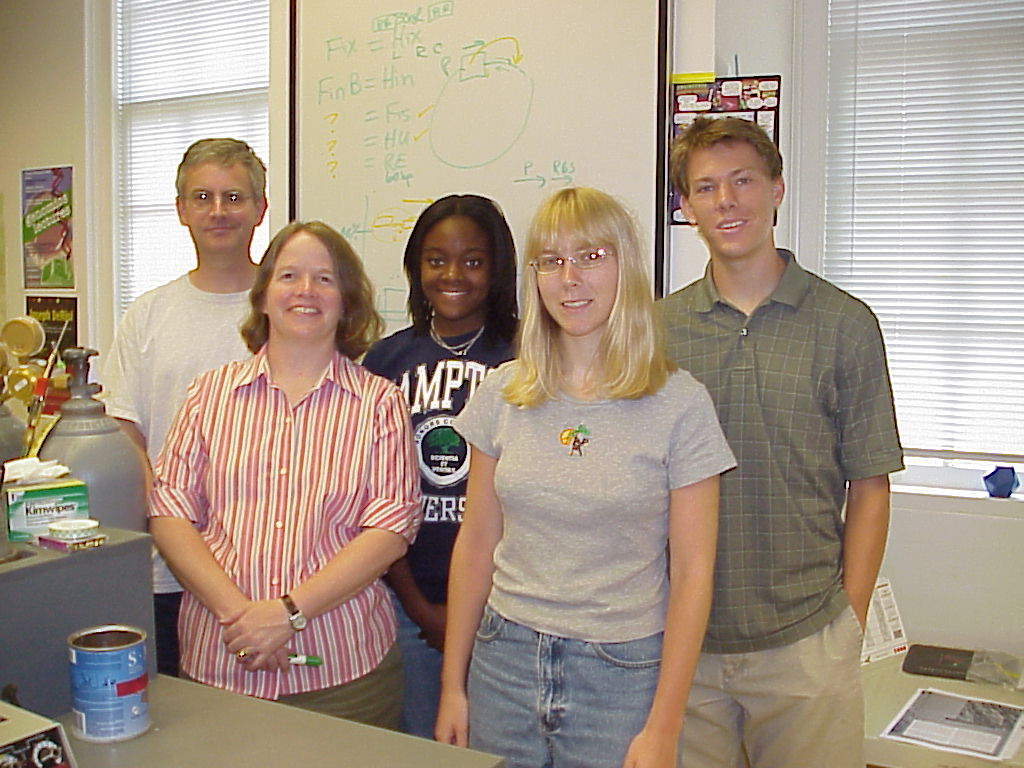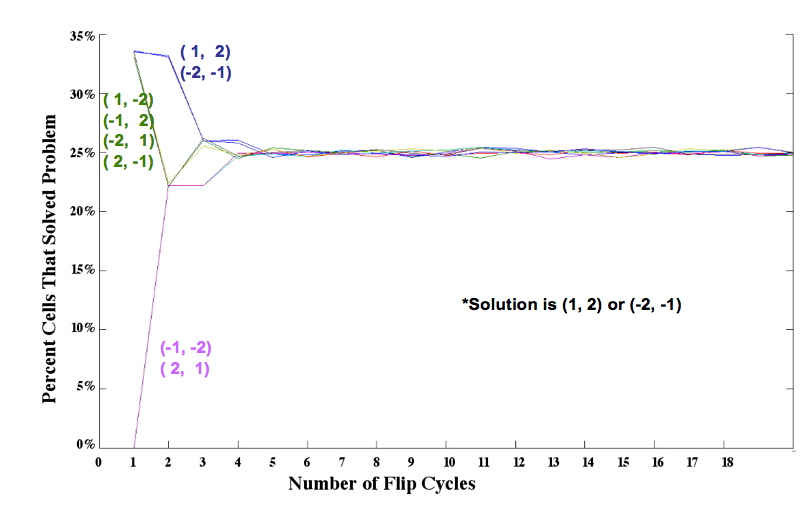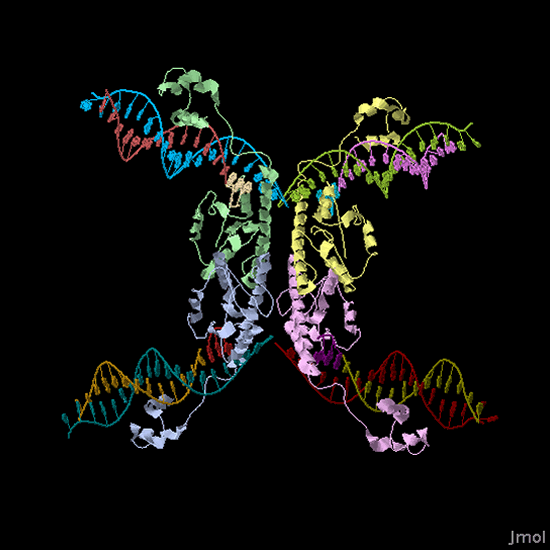Davidson 2006
From 2006.igem.org
| Line 17: | Line 17: | ||
{| | {| | ||
|- valign="top" | |- valign="top" | ||
| - | |[[Image:four_pancakes.jpg|thumb|250px|left|'''Figure 1''' A scrambled stack of four burnt pancakes. ]]In the burnt pancake problem, each pancake is given an orientation by burning one side. Figure 1 shows a scrambled stack of burnt pancakes. Every unit, or pancake, must be placed in the proper order (largest on bottom, smallest on top) ''and'' in the proper orientation (burnt side down, golden side up). Pancakes are sorted with two spatulas. One spatula is used to lift zero or more pancakes off the top of the stack, while the second spatula flips a stack of one or more of the remaining pancakes. The pancakes lifted by the first spatula are then returned to the top of the stack. You can watch [[Media:burnt_pancake. | + | |[[Image:four_pancakes.jpg|thumb|250px|left|'''Figure 1''' A scrambled stack of four burnt pancakes. ]]In the burnt pancake problem, each pancake is given an orientation by burning one side. Figure 1 shows a scrambled stack of burnt pancakes. Every unit, or pancake, must be placed in the proper order (largest on bottom, smallest on top) ''and'' in the proper orientation (burnt side down, golden side up). Pancakes are sorted with two spatulas. One spatula is used to lift zero or more pancakes off the top of the stack, while the second spatula flips a stack of one or more of the remaining pancakes. The pancakes lifted by the first spatula are then returned to the top of the stack. You can watch [[Media:burnt_pancake.ogg a movie]] of the stack in Figure 1 being sorted to see how the puzzle is solved. |
| - | + | ||
| - | + | ||
| - | + | ||
| - | + | ||
<big>'''Approach'''</big><br> | <big>'''Approach'''</big><br> | ||
| + | Trial and error is one approach to solving the burnt pancake problem, but how could one compute the quickest solution? Our idea is to let E. coli do the work, using each cell as a tiny processor in a massively parallel machine. | ||
{| | {| | ||
|- valign="top" | |- valign="top" | ||
Revision as of 05:07, 27 October 2006
 Project Overview [http://partsregistry.org/cgi/partsdb/pgroup.cgi?pgroup=iGEM2006partsregistry.org/cgi/partsdb/pgroup.cgi?pgroup=iGEM2006&group=Davidson Davidson Parts] Team Members Tools and Resources Check out our [http://www.bio.davidson.edu/courses/synthetic/photos/FlapJack_HotCakes.html Official Team Photo] |
Our goal is to mathematically model and genetically engineer a biological system that can compute solutions to a puzzle called the burnt pancake problem. Our work was done in collaboration with the [http://2006.igem.org/wiki/index.php/Missouri_Western_State_University_2006 Missouri Western iGEM Team] and an undergraduate research fellow from [http://www.hamptonu.edu/ Hampton University].
The Burnt Pancake Problem
Our project integrates math and biology using the [http://en.wikipedia.org/wiki/Pancake_sorting pancake problem], a puzzle in which a scrambled series of units (or stack of pancakes) must be shuffled into the correct order. You can try solving [http://www.cut-the-knot.org/SimpleGames/Flipper.shtml a version of the pancake problem] yourself.
| In the burnt pancake problem, each pancake is given an orientation by burning one side. Figure 1 shows a scrambled stack of burnt pancakes. Every unit, or pancake, must be placed in the proper order (largest on bottom, smallest on top) and in the proper orientation (burnt side down, golden side up). Pancakes are sorted with two spatulas. One spatula is used to lift zero or more pancakes off the top of the stack, while the second spatula flips a stack of one or more of the remaining pancakes. The pancakes lifted by the first spatula are then returned to the top of the stack. You can watch Media:burnt_pancake.ogg a movie of the stack in Figure 1 being sorted to see how the puzzle is solved.
Building the Biological System
TEAM MEMBERS
Faculty
TOOLS AND RESOURCES
White Board Biology Tools (Wet Bench)
Math Tools
Bio-Math Tools
Assembly Plans Progress |



